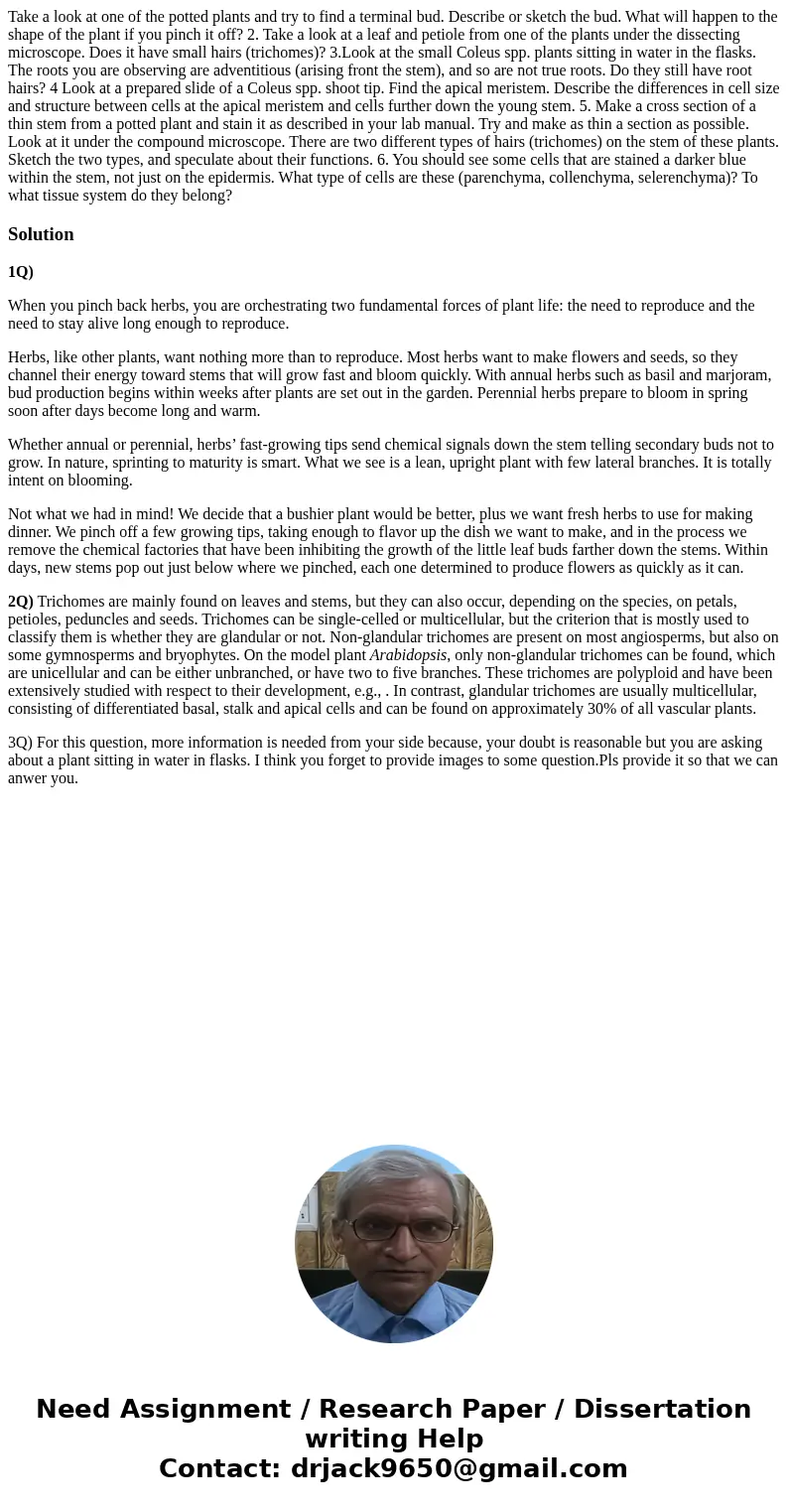Take a look at one of the potted plants and try to find a te
Solution
1Q)
When you pinch back herbs, you are orchestrating two fundamental forces of plant life: the need to reproduce and the need to stay alive long enough to reproduce.
Herbs, like other plants, want nothing more than to reproduce. Most herbs want to make flowers and seeds, so they channel their energy toward stems that will grow fast and bloom quickly. With annual herbs such as basil and marjoram, bud production begins within weeks after plants are set out in the garden. Perennial herbs prepare to bloom in spring soon after days become long and warm.
Whether annual or perennial, herbs’ fast-growing tips send chemical signals down the stem telling secondary buds not to grow. In nature, sprinting to maturity is smart. What we see is a lean, upright plant with few lateral branches. It is totally intent on blooming.
Not what we had in mind! We decide that a bushier plant would be better, plus we want fresh herbs to use for making dinner. We pinch off a few growing tips, taking enough to flavor up the dish we want to make, and in the process we remove the chemical factories that have been inhibiting the growth of the little leaf buds farther down the stems. Within days, new stems pop out just below where we pinched, each one determined to produce flowers as quickly as it can.
2Q) Trichomes are mainly found on leaves and stems, but they can also occur, depending on the species, on petals, petioles, peduncles and seeds. Trichomes can be single-celled or multicellular, but the criterion that is mostly used to classify them is whether they are glandular or not. Non-glandular trichomes are present on most angiosperms, but also on some gymnosperms and bryophytes. On the model plant Arabidopsis, only non-glandular trichomes can be found, which are unicellular and can be either unbranched, or have two to five branches. These trichomes are polyploid and have been extensively studied with respect to their development, e.g., . In contrast, glandular trichomes are usually multicellular, consisting of differentiated basal, stalk and apical cells and can be found on approximately 30% of all vascular plants.
3Q) For this question, more information is needed from your side because, your doubt is reasonable but you are asking about a plant sitting in water in flasks. I think you forget to provide images to some question.Pls provide it so that we can anwer you.

 Homework Sourse
Homework Sourse